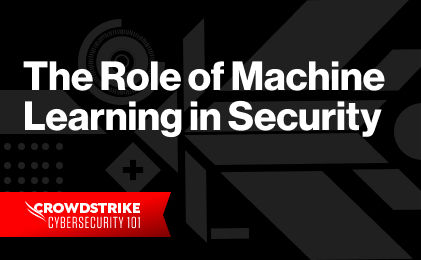Among the tools used in modern cybersecurity, AI-powered behavioral analysis — which leverages artificial intelligence to learn and predict adversarial behavior patterns — is becoming increasingly necessary. By augmenting traditional methods of detection with proactive, real-time detection of anomalies and potential threats, AI-powered behavioral analysis can help reduce the risk of security breaches and strengthen an organization’s overall security posture.
In this article, we’ll explore the concept of AI-powered behavioral analysis. We’ll begin by looking at its historical development and understanding how it works. Then, we’ll consider its key advantages, limitations, and concerns.
Historical development of behavioral analysis in cybersecurity
In the realm of cybersecurity, behavioral analysis involves observing activity within a system to discern between normal behavior and atypical or anomalous activity and identify potential threats. Traditional cybersecurity methods have relied on predefined, rules-based systems or signature-based detection. Though these methods can be adept at identifying known threats, they struggle to detect new, previously unseen cyberattacks, such as zero-day exploits or sophisticated, slow-moving threats. Adversaries are constantly evolving their tactics to evade detection, stealthily blending into the noise of everyday activity and finding ways to gain access to internal environments at increasingly faster speeds. This is further complicated as adversaries embrace malware-free attacks or use stolen credentials to impersonate valid users. Moreover, the sheer volume of data generated by modern networked systems can overwhelm traditional security technologies, making it difficult to rapidly analyze telemetry against emerging threat intelligence to detect early signs of adversary presence.
Indicators of attack: applying behavioral analysis to detect adversaries
Behavioral analysis can be a powerful complement to existing defense technologies, providing an additional layer of defense that activates at runtime to review activity that may have evaded detection from earlier defenses, such as sensor-based machine learning (ML), memory scans, or signatures. Though the cybersecurity industry has long acknowledged the opportunity of applied behavioral analysis, one of the biggest hindrances to applying this at enterprise scale has been having the computing resources and high-fidelity telemetry necessary to effectively fuel and maintain behavioral analysis.
CrowdStrike was among the first companies to perform behavioral analysis effectively, pioneering indicators of attack (IOAs) by applying advanced analytics and expert-generated intelligence to process the trillions of data points regularly collected by the cloud-native CrowdStrike Falcon® platform. IOAs are proactive, generalized indicators of adversary behavior and stand in contrast to the more common reactive indicators known as indicators of compromise (IOCs). By examining sequences of behavior against adversary attack patterns and motivations, IOAs enable organizations to identify subtle signs of adversary behavior in an environment. Moreover, IOAs enable organizations to perform generalized analysis, making these tools adaptive to detecting signs of malicious behavior even in the case of never-before-seen threats.
Recently, CrowdStrike has accelerated its capacity to classify new IOAs with the release of AI-powered indicators of attack. By marrying the speed and power of cloud-based AI with CrowdStrike’s high-fidelity data (composed of trillions of data points and refined with expert insights), CrowdStrike has accelerated and expanded its ability to issue new IOAs, enabling organizations to have protection that rapidly adapts to an ever-evolving adversary landscape.
Learn More
Explainability of AI models can help crack the code on AI decision-making. The use of SHAP (SHapley Additive exPlanations) values can be a powerful tool for data scientists to build accurate machine learning models by identifying areas where the model may be making errors or where the data used to train the model may be flawed. Learn more!
Blog: Cracking the Code of AI Decision Making: Harnessing the Power of SHAP Values
How it works
In cybersecurity, AI-powered behavioral analysis involves several key steps. Each step helps teach the system what to look for and how to respond to potential threats. The main steps in the process include the following:
- Data collection: The system gathers a broad spectrum of data, including user activities, system logs, and network traffic. This comprehensive dataset serves as the foundation on which AI builds its understanding of normal and abnormal behaviors.
- Training the AI: ML algorithms use the collected data for training to understand normal behaviors within the system. The more diverse and comprehensive the data, the more accurately the AI can understand and predict behaviors.
- Pattern recognition: The trained AI system actively monitors system activities to identify patterns and behaviors. It uses the understanding gained from training to distinguish between normal and suspicious activities.
- Anomaly detection: If the AI system identifies a pattern of behavior that deviates from the established norm, then it flags the anomaly as a potential indicator of a security threat. Anomalies can range from minor policy violations to major security breaches.
- Expert validation: A human expert ensures that the AI system flagged the anomaly accurately and swiftly moves to correct it.
In this context, user and entity behavior analytics (UEBA) plays a pivotal role. UEBA focuses on human users, machines, devices, and network entities, analyzing their behaviors to identify potential security threats like insider attacks or compromised credentials. UEBA helps create a comprehensive view of the entire system, enhancing the AI's ability to detect threats.

Customer Story: Mercedes-AMG Petronas Formula One Team
The Mercedes-AMG Petronas Formula One Team is one of the most dominant forces in F1 today, and a company that recognizes the role of technology and data in competition. Learn how CrowdStrike has built its reputation on superior protection delivered at stunning speed.
Download NowAdvantages of AI-powered behavioral analysis
Although the advantages of AI-powered behavioral analysis may already seem clear, let’s highlight a number of key points:
- Real-time threat detection and faster response times: AI-powered behavioral analysis systems can detect anomalies as they happen, enabling immediate response to potential threats and reducing the damage they may cause.
- Acting as an additional layer of defense at runtime: Even after initial security measures, AI behavioral analysis offers an additional layer of protection, scrutinizing behaviors during operation to catch threats that may have initially slipped through.
- Ability to handle large volumes of data and scale: Given their capacity to process and analyze massive datasets swiftly, these systems can easily scale up with growing networks, maintaining effective threat detection across increasing volumes of activity.
- Enhancement of predictive capabilities: By learning from past behaviors and trends, AI can anticipate potential future threats, allowing preemptive action to mitigate risks.
- Reduction in false positives: Through ongoing training and retraining, machine learning systems improve in their ability to distinguish between suspicious activity and harmless deviations from the norm, minimizing the time and resources spent investigating false alarms.
- Ability to examine sequences of behaviors across an attack surface regardless of tools used: This advantage provides a more holistic line of threat defense that is not limited by observed activity on the specific tools or techniques employed by attackers.
- Ability to generalize to detect suspicious patterns: This generalization of behavioral patterns allows for IOAs to detect even unknown or zero-day threats, providing an adaptable defense against a wide range of potential attacks.
- Bringing together the scale of the cloud with the speed of on-sensor detection: AI-powered behavioral analysis can leverage cloud resources for large-scale analysis against a vast set of variables while activating fast, local detection and containment of threats through on-sensor systems.
Despite these advantages, you should also be aware of the limitations of AI-powered behavioral analysis.
Limitations and concerns with AI-powered behavioral analysis
Like all technologies, AI-powered behavioral analysis comes with specific limitations and concerns related to usage:
- Heavy dependence on the training data: The performance of an AI system is directly tied to the quality and volume of the data it is trained on. Inadequate or biased data can lead to poor threat detection and higher rates of false positives and negatives.
- Risk of false negatives and overreliance on AI: Despite their advanced capabilities, AI-based systems can occasionally miss threats (false negatives), especially sophisticated ones. Overreliance on AI, without human oversight, can potentially let some threats go undetected.
- Ethical and privacy concerns with behavioral data collection: The extensive collection of user and entity behavior data necessary for these systems to be effective may raise privacy issues. Handling this data ethically and in compliance with regulations requires strategic planning and governance.
- The possibility of attackers targeting or manipulating AI systems: As AI systems become integral to cybersecurity defenses, they themselves could become targets. Sophisticated attackers might attempt to manipulate the AI training process or exploit vulnerabilities in the system.
Learn More
CrowdStrike's Charlotte AI is a new generative AI security analyst that uses the world’s highest-fidelity security data and is continuously improved by a tight feedback loop with CrowdStrike’s industry-leading threat hunters, managed detection and response operators, and incident response experts. Learn more!
Blog: Introducing Charlotte AI, CrowdStrike's AI Security Analyst
Conclusion
The evolving sophistication of cyber threats has elevated traditional cybersecurity methods to new heights. AI-powered behavioral analysis — built on a process that includes data collection, AI training, pattern recognition, and anomaly detection — enhances cybersecurity with the ability to observe, learn, and predict behavior patterns. The resulting system is robust, one that can learn from and adapt to a landscape of ever-changing threats.
Although this approach brings many advantages, we must also be aware of the requirements for modern security platforms to effectively deliver AI-powered behavioral analysis, such as the need for high-quality training data.
For further exploration into the potential of AI in cybersecurity, learn about how CrowdStrike pioneered indicators of attack and AI-powered indicators of attack, utilizing ML models and threat intelligence to detect and stop breaches quickly. The cloud-native CrowdStrike Falcon platform provides a flexible, efficient, and scalable solution to the challenges of modern cybersecurity.





